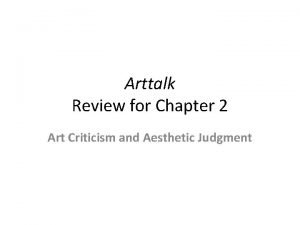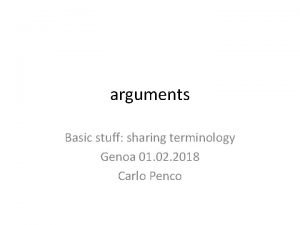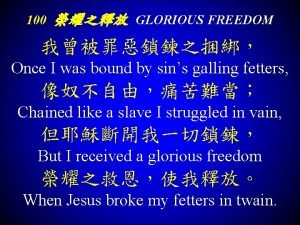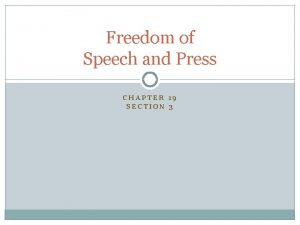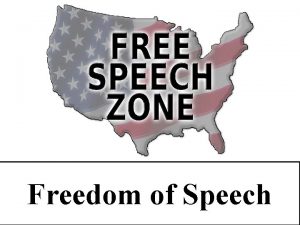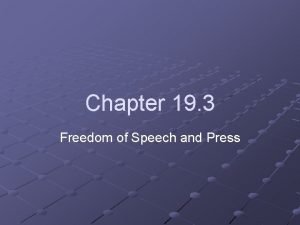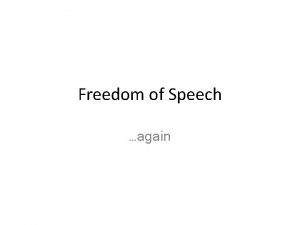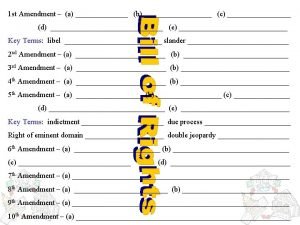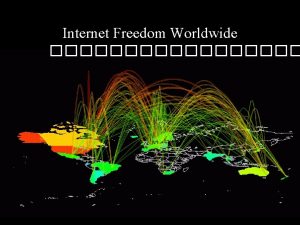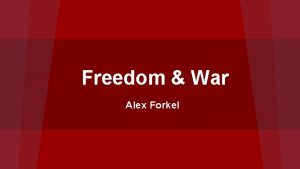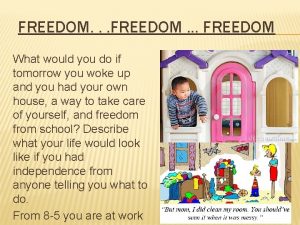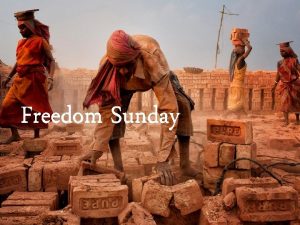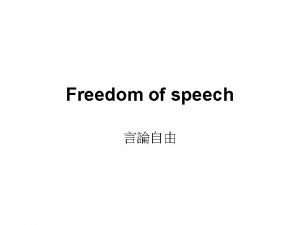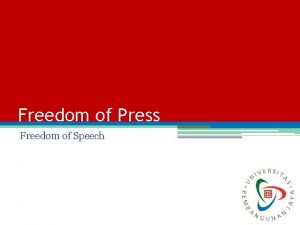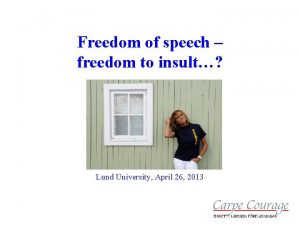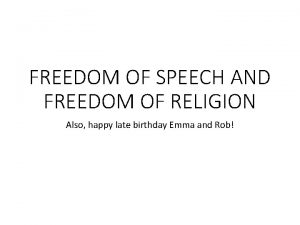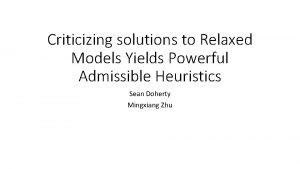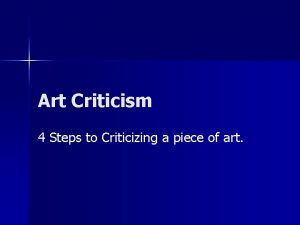FREEDOM OF SPEECH SEDITIOUS SPEECH Speech criticizing the


















- Slides: 18

FREEDOM OF SPEECH

SEDITIOUS SPEECH • Speech criticizing the gov’t or attempting to overthrow it

SEDITIOUS SPEECH • Schenck v. United States (1919) – What: • During World War I, Schenk handed out pamphlets that urged people to fight the draft – Court Decision: • Not protected speech • okay to limit his actions because we were at war • Clear and Present Danger Test -- Speech may be limited when it poses an immediate danger

SYMBOLIC SPEECH • Using actions or symbols to express opinions

SYMBOLIC SPEECH • Tinker v. Des Moines (1969) – What: • Students suspended for wearing black armbands in protest of Vietnam Conflict – Court Decision: • Protected speech • Suspension was unconstitutional • Did not disrupt school day/activities

SYMBOLIC SPEECH • Texas v. Johnson (1989) – What: • Burning an American flag in protest – Court Decision: • protected speech • Can’t prohibit an action simply because most people don’t agree with it

HATE SPEECH • Insulting words that might provoke immediate violence

HATE SPEECH • Chaplinsky v. New Hampshire – What: • Called a city official a “******* racketeer” and “a ******* fascist” in a public place • Arrested for breach of peace – Court Decision: • Not protected speech; “fighting words” • Such words are not protected because they do not convey ideas – are meant to cause injury or incite violence

DEFAMATORY SPEECH • False speech that damages a person’s good name, character, or reputation • Libel – WRITTEN • Slander – SPOKEN

DEFAMATORY SPEECH New York Times v. Sullivan (1964) – What: • Ad in NYT claiming the Montgomery police were racist • City Commissioner sued for libel – did not have to prove he was actually harmed – Court’s Decision: • Protected speech: Must show actual malice • 1 st Amendment protects publication of statements – even false ones – about public officials

STUDENT SPEECH • Hazelwood School District v. Kuhlmeier – What: • Principal deleted articles from a school newspaper he felt were inappropriate – Court’s Decision • • • NOT protected: School CAN censor Schools can regulate speech in school sponsored newspapers, theatrical production, and other activities. Difference between student’s personal expression (protected) and speech that occurs as part of the school curriculum (not protected.

STUDENT SPEECH • Morse v. Frederick (2007) – What: • At school function, student holds up banner, “Bong Hits 4 Jesus” • Student suspended for violating school policy against promoting illegal drug use – Court Decision: • • Not protected Schools may prohibit speech which promotes illegal drug use

PRIOR RESTRAINT • What: censorship • Near v. Minnesota (1931) – What: • Near published article calling local officials gangsters • Can the gov’t STOP it from being published? ? – Decision of Court: • government could not censor or otherwise prohibit a publication in advance -- even though the communication might be punishable after publication

Free Press and Fair Trials • Protecting News Sources – What: • Can reporters refuse to testify in order to protect confidential information and their sources? • NO • Some states have “Shield Laws” to protect reporters • May be held in “Contempt of Court” and forced to reveal info or sources or go to jail

Free Press and Fair Trials • Pretrial publicity Judges can decide to: 1. Move the trial to another city 2. Limit reporters in courtroom 3. Sequester (isolate) jury

ASSEMBLY & PETITION

METHODS • Parades • Picketing • Petitions • Letters • Marches

Acceptable Limitations • May require a permit • Can’t restrict use of facilities • Can’t disrupt courts or schools • Can’t threaten public safety
 When criticizing functional objects
When criticizing functional objects Positive freedom negative freedom
Positive freedom negative freedom Glorious freedom wonderful freedom
Glorious freedom wonderful freedom Chapter 19 section 3 freedom of speech and press
Chapter 19 section 3 freedom of speech and press Freedom and responsibility speech
Freedom and responsibility speech Direct speech success criteria
Direct speech success criteria Chapter 19 section 3 freedom of speech and press
Chapter 19 section 3 freedom of speech and press Mật thư anh em như thể tay chân
Mật thư anh em như thể tay chân Tư thế ngồi viết
Tư thế ngồi viết Voi kéo gỗ như thế nào
Voi kéo gỗ như thế nào Thẻ vin
Thẻ vin Thơ thất ngôn tứ tuyệt đường luật
Thơ thất ngôn tứ tuyệt đường luật Các châu lục và đại dương trên thế giới
Các châu lục và đại dương trên thế giới Sự nuôi và dạy con của hổ
Sự nuôi và dạy con của hổ Từ ngữ thể hiện lòng nhân hậu
Từ ngữ thể hiện lòng nhân hậu Diễn thế sinh thái là
Diễn thế sinh thái là Lp html
Lp html V. c c
V. c c Vẽ hình chiếu vuông góc của vật thể sau
Vẽ hình chiếu vuông góc của vật thể sau
